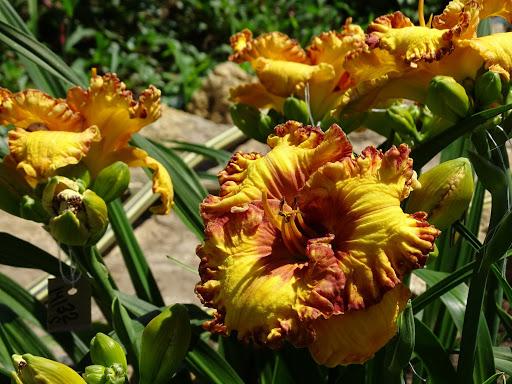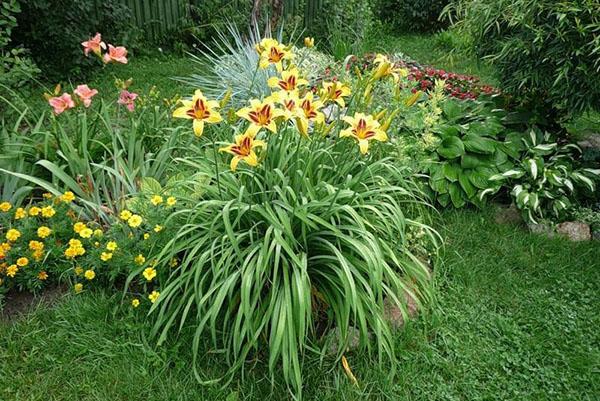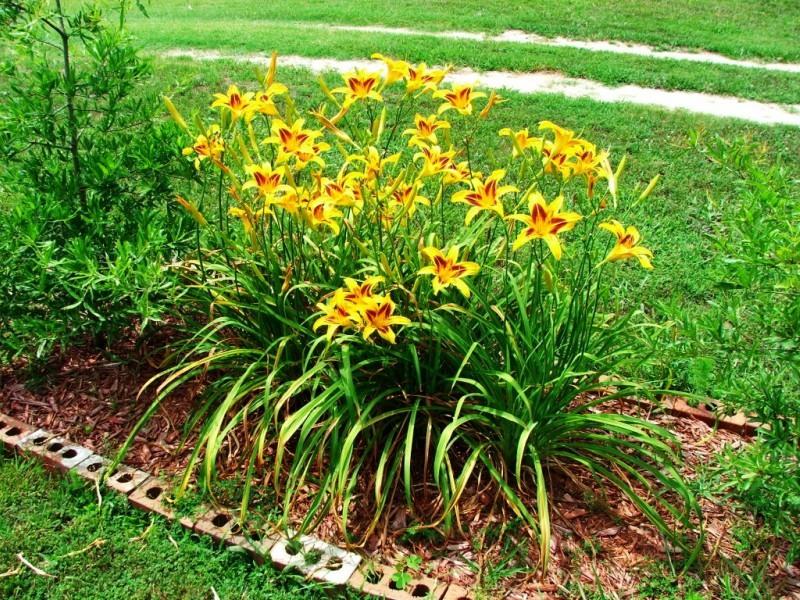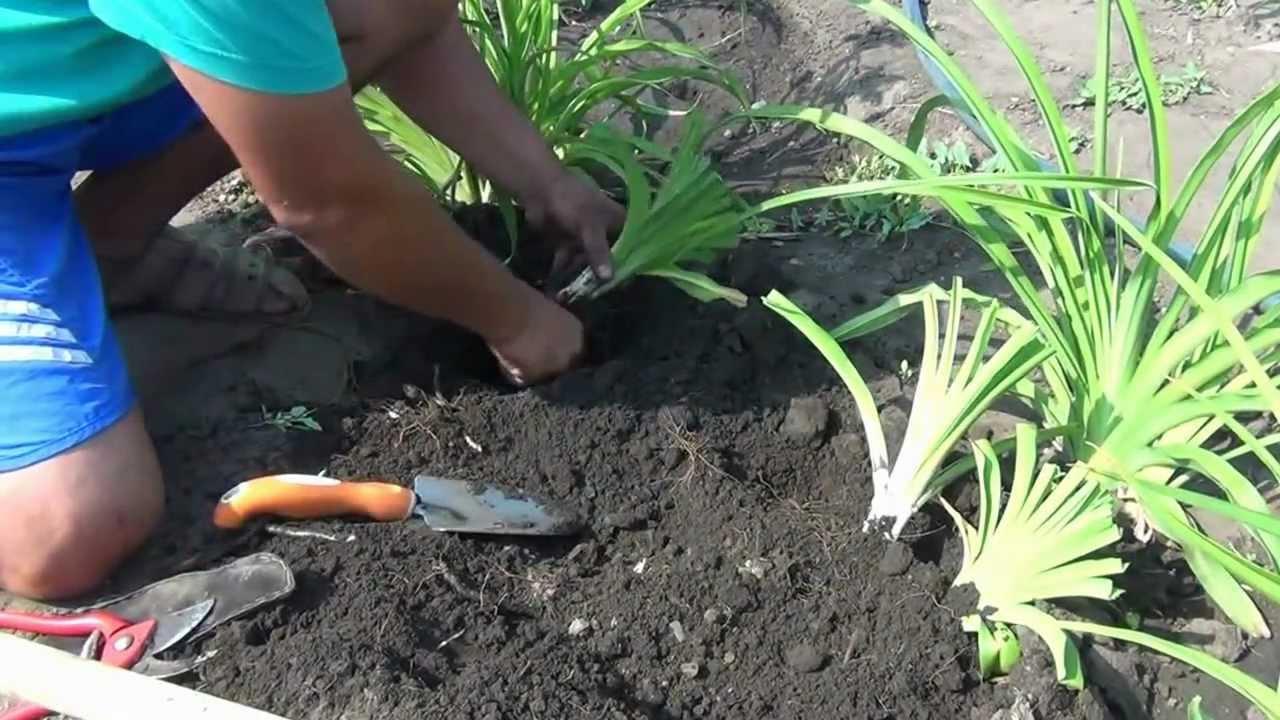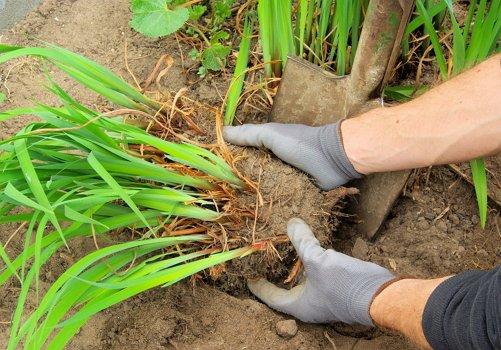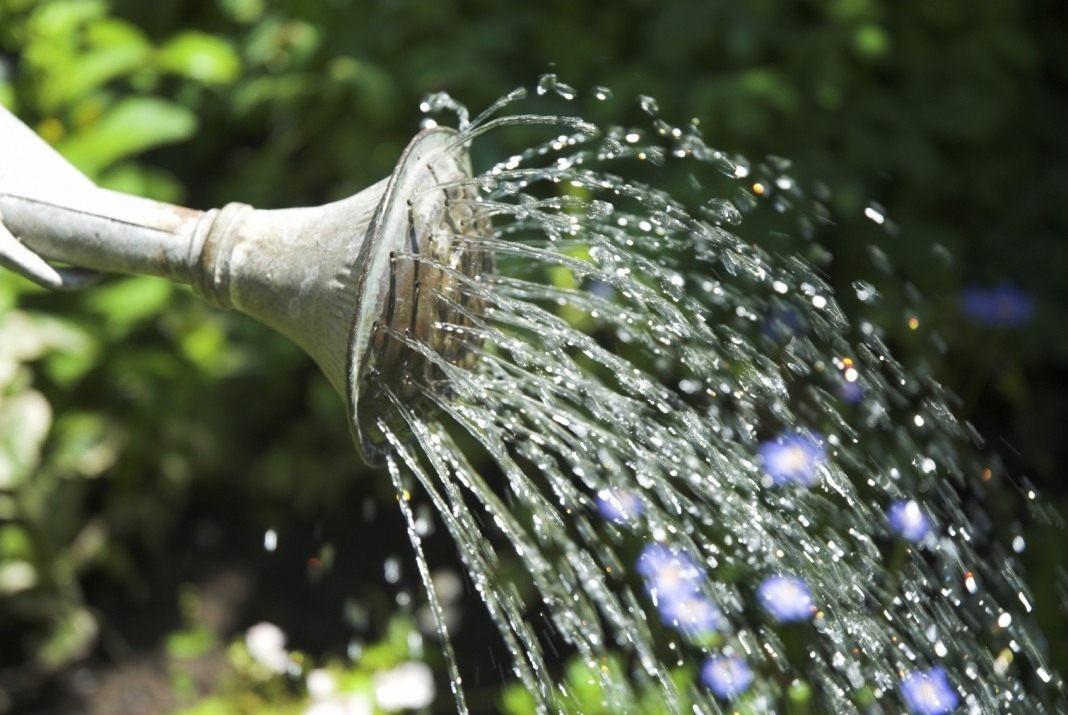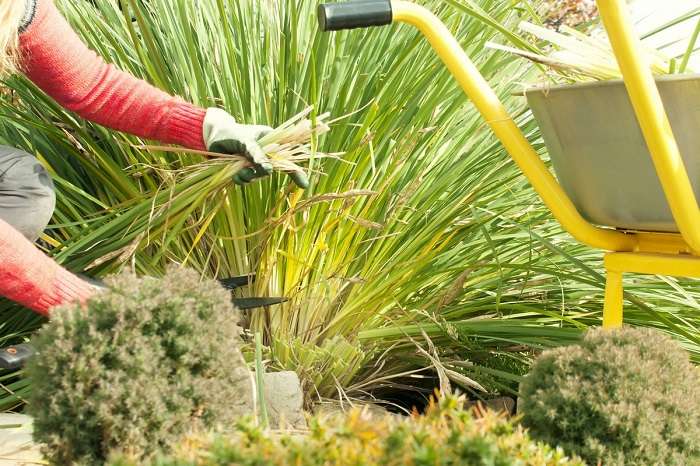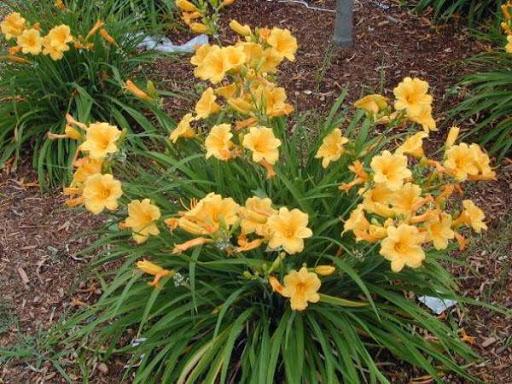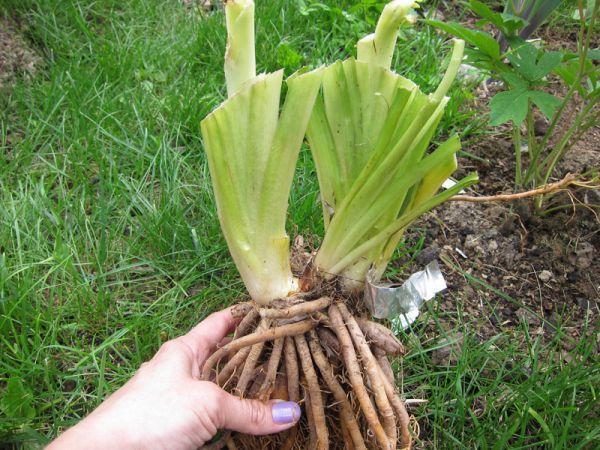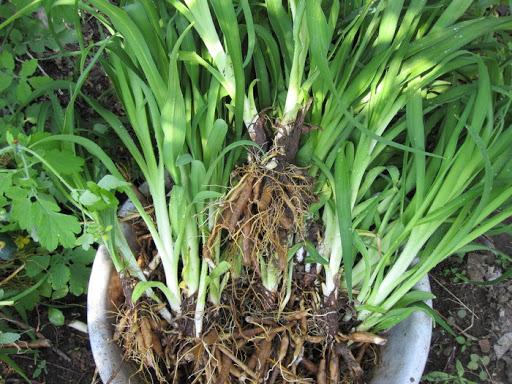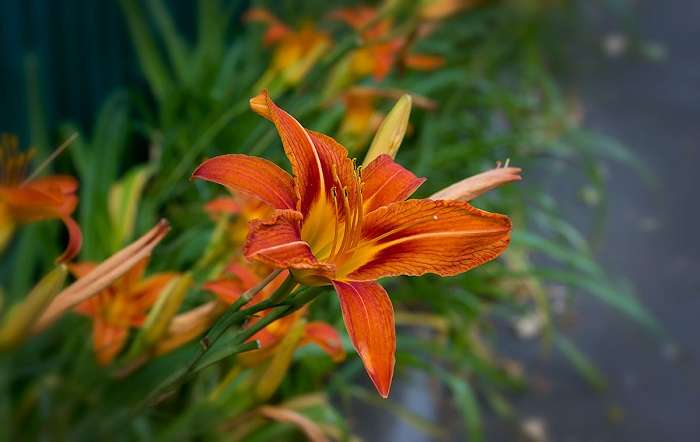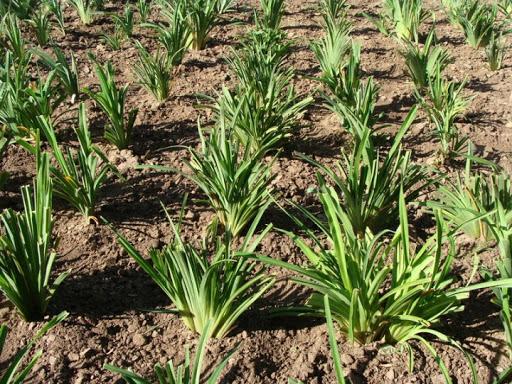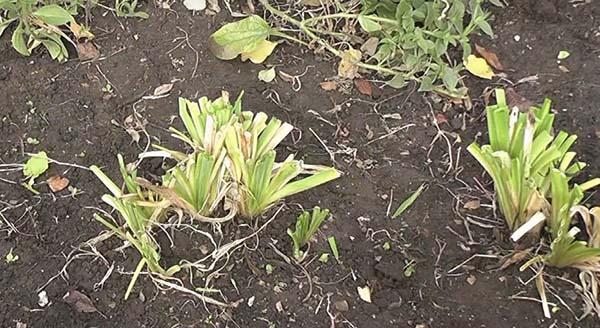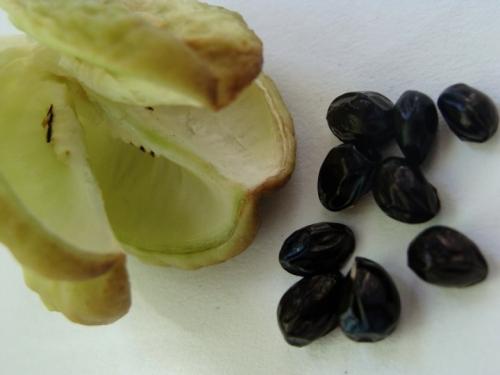Planting and caring for daylilies in open ground has many features. This perennial plant has been known to people since ancient times. Today it is actively used in landscape design to decorate flower beds and mixborders. In order for the plant to bloom luxuriantly and profusely and develop normally, it is recommended to properly care for it. The flower needs timely watering, fertilizing, and pruning. Preparing the plant for winter is of no small importance.
- Features and description of culture
- Advantages of use in landscape design
- Basic requirements for cultivation
- Illumination of the place
- Temperature
- Humidity
- Required soil composition
- The best and worst neighbors
- How to plant a flower in open ground
- Deciding on a landing site
- Selecting high-quality planting material
- Recommended crop sowing time
- Step-by-step landing algorithm
- How to care for a flower in the garden
- Watering and fertilizing
- Loosening the soil
- Plant pruning
- The need for pruning
- When is it better: spring or autumn
- Scheme and instructions for pruning daylilies
- When should daylilies be replanted?
- in spring
- In summer
- in autumn
- Features of preparing crops for winter in the regions
- In the Urals and Siberia
- In the Volga region
- In the middle lane
- Reproduction technique
- Dividing the bush
- Stem cuttings
- Seeds
- Typical mistakes when caring for a plant
Features and description of culture
Daylily has thick and fleshy adventitious roots. They provide crop protection from drought. The basal leaves have a broad linear shape. They can be straight or curved. The flowers are most often funnel-shaped. They differ in appearance and are yellow, brown-red, and orange. Inflorescences include several flowers. A maximum of 3 flowers can bloom at the same time. In this case, flowering lasts 20 days.
The bush may have one or several leafy flower stalks. They vary in length. Depending on the variety, the flower stalks reach 0.3-1 meters. After flowering is completed, fruits are formed. They are triangular boxes filled with seeds.
Advantages of use in landscape design
Daylily is often used in landscape design. For this purpose, wild crops and hybrid varieties are used. The flower can be planted alone or made part of a composition. The plant goes well with other flowers - tulips, dahlias, delphiniums. It can be combined with crocuses, irises, and hyacinths.The culture goes well with coniferous trees, cereal plants, and deciduous bushes. Small bushes complement alpine hills and flower beds well.
Tall varieties can be used to create hedges and borders. The flower grows well near ponds, lakes, and streams. Fragrant crops can be placed near resting places. When choosing a place for a daylily, it is recommended to ensure that it does not merge with buildings.
Crops with bright or dark flowers grow well in well-lit areas. Thanks to this, the petals will have a rich color. Light varieties grow well in shady places. After flowering is completed, the leaves dry out and lose their decorative properties. This feature should definitely be taken into account when creating a flower bed.
Basic requirements for cultivation
In order for the plant to develop normally and bloom luxuriantly, it is recommended to provide it with optimal conditions.
Illumination of the place
The plant is undemanding to planting conditions. It can be planted in shade or partial shade. However, it will be possible to achieve bright flowering only in a sunny place. If you plant the bush in a shady area, its color will become pale. In this case, the daylily blooms late and fades early.
Temperature
The growing season of the crop begins quite early. This happens immediately after the snow melts and the frost ends, when the temperature at night is at least 0 degrees. As a rule, daylilies begin to awaken in mid-April.
In autumn, temperature parameters at night can be less than -3 degrees. In such conditions, the leaves of the flower begin to wither. With the early onset of autumn frosts, the foliage withers before it has time to turn yellow.
In cold summers, daylily flowering is significantly disrupted.At the same time, the buds become small and do not open completely. Sometimes they don’t bloom at all, but wither and fall off. In intense summer heat, the flowering period of daylilies is significantly reduced. The bright sun burns the foliage of the bushes.
Humidity
The culture is considered very moisture-loving. To achieve lush flowering and normal development of the plant, it is recommended to water it in a timely manner. It is especially important to do this in dry weather.
Required soil composition
The plant is considered undemanding to the composition of the soil. It can grow in any garden soil. However, it will be possible to obtain the most abundant flowering when growing the crop in light and fertile soil. If the soil on the site is not ideal, it can be improved. So, it is recommended to add compost and sand to clay soil. Sandy soil should be mixed with clay. It is recommended to dilute the sod-podzolic soil with compost.
The best and worst neighbors
Daylilies are suitable for single and group plantings. They can be combined with various shrubs - for example, with viburnum or paniculate hydrangea. Ornamental cereals are perfect additions, spot loosestrife, yarrow, physiostegia. Experienced gardeners do not recommend combining flowers with tall trees, as this will lead to competition and oppression of the plant.
How to plant a flower in open ground
In order for the crop to grow quickly and delight with lush flowering, it is worth paying attention to planting work.
Deciding on a landing site
Daylily grows best in a sunny, well-lit place. The exception is varieties with dark inflorescences. When exposed to bright sunlight, they quickly fade. It is recommended to place such crops in partial shade.
Selecting high-quality planting material
To achieve success in growing crops, it is recommended to pay attention to the selection of seedlings. It must be strong and of high quality. The plant should not have damaged areas or signs of rotting. Before planting, it is recommended to carefully inspect the crop. If necessary, it is worth pruning dead roots. Then it is recommended to soak the daylily roots in a growth stimulator.
Recommended crop sowing time
It is allowed to plant the crop at different times - from spring to autumn. Specific dates should be chosen taking into account the climatic characteristics of the region. With the early onset of winter, during autumn planting, the daylily will not take root, which will lead to its death. It takes 1 month for the culture to adapt to new conditions.
In the middle zone, experienced gardeners recommend planting the plant in May or August. Dividing the bush and replanting the crop should also be done in spring or late summer.
Step-by-step landing algorithm
It is recommended to plant daylilies in the ground in cool weather. In this case, you should follow the following sequence of actions:
- Dig a hole for planting. It should be of such a size that all the roots of the flower fit, and there is some space left on the sides. On average, the depth of the hole is 30 centimeters and the diameter is 40 centimeters.
- Place a small mound in the center of the depression. It is worth placing the root system of the flower on it. In this case, it is recommended to carefully straighten all the roots. They should be directed to the sides and down at a slight angle.
- Determine the correct recess level. In this case, you should focus on the light green stripe at the base of the sockets. After placing the bush, it is recommended to sprinkle it with earth.
- Water the bush generously with warm water.However, it is forbidden to touch the foliage.
The root neck of the crop should not be buried more than 2-3 centimeters. It is also recommended to ensure that no bare roots remain on the surface.
After planting, it is recommended to cover the soil in the center of the flowerbed with a layer of mulch, which will help retain moisture.
How to care for a flower in the garden
This plant is unpretentious. However, to achieve lush flowering, it is recommended to properly care for it.
Watering and fertilizing
Daylilies are drought tolerant. They have a developed root system and have the ability to accumulate moisture. The need for watering depends on the growing season. It is especially important to moisten the soil during flowering. It lasts almost 2 months. At the same time, water the bush abundantly enough to moisten the soil by 30-40 centimeters.
After planting, it is recommended to water the plant once a week. In this case, water is allowed to be poured at the root or using the sprinkling method. However, water getting on flower petals can lead to stains, which negatively affects the decorative properties.
In order for the culture to fully develop, it is recommended to feed it in a timely manner. Moreover, the composition and amount of fertilizers depend on the seasonal factor and the age of the crop. Mature bushes have a greater need for nutrients. At the beginning of the growing season, it is recommended to feed the bushes with nitrogen. This substance ensures rapid growth of leaves. Subsequently, the crop should be fertilized with phosphorus and potassium.
Loosening the soil
After each watering, it is recommended to loosen the soil. It helps saturate the root system with oxygen and nutrients.During the loosening process, you should definitely get rid of weeds.
Plant pruning
It is recommended to periodically prune daylilies. This procedure has certain features taking into account the seasonal factor.
The need for pruning
Timely pruning helps make the bush more luxuriant and improve its decorative properties. It is recommended to carry out the procedure throughout the entire growing season - with the arrival of spring and after flowering.
When is it better: spring or autumn
It is recommended to prune daylilies several times during the season. The further development and appearance of the bush depends on this. The procedure should be carried out in spring and autumn. Moreover, each pruning has certain characteristics.
Scheme and instructions for pruning daylilies
Spring pruning is very important for normal flower development. This procedure prepares the bush for flowering and helps to awaken from the winter dormancy period. At this stage, it is recommended to cut off all excess leaves and fragments of the plant. It is definitely recommended to remove fading or withered parts of the flower. Otherwise, they will affect healthy fragments of the culture. With the arrival of cold weather, it is again worth carefully inspecting the bush for the presence of withered foliage. If possible, it is recommended to cut it off immediately.
When should daylilies be replanted?
There are no specific dates for transplanting daylilies to a new location. The plant normally tolerates being moved to another area. Most often, gardeners carry out this procedure in spring or late summer. However, there are other options.
in spring
To replant daylilies in the spring, it is recommended to wait until the soil has fully warmed up. This usually happens in mid-April or mid-May - it all depends on the climate of the region.To carry out the procedure, it is recommended to dig up the daylily from the soil with a lump of earth. This must be done as carefully as possible so as not to damage the roots of the plant. Then the culture should be placed in a container with water or under running water. This will help get rid of excess soil and carefully examine the roots. If necessary, it is recommended to trim them to 15-20 centimeters.
If there is a need for crop propagation, the bush is divided into fragments. Then you should add fertilizer to the prepared hole and place a bush or division in it. Then water generously and sprinkle with soil. Then the bush must be compacted and watered again. This will help remove any air trapped between the roots. In spring, the plant must be replanted in the evening.
Crops with large roots transplanted in the spring will bloom magnificently in the same year. Delenki with small roots will form buds only next season.
In summer
If necessary, the bush can be transplanted to a new location in August. It is recommended to handle the roots as carefully as possible. They should not be cut or divided. In this case, it is permissible to remove rotten areas and sprinkle the cut areas with ash. A plant moved to a new location is recommended to be watered systematically. Regular loosening of the soil and removal of weeds is of no small importance. In summer, moving the culture to a new place is allowed only in the evening.
in autumn
It is recommended to carry out autumn replanting before the arrival of frost and cold weather. Depending on the climate of the region, it is held in September or October. When carrying out an autumn transplant, it is important to ensure that the bush has time to adapt to new conditions before the arrival of frost. It is better to carry out this procedure in the daytime.
Features of preparing crops for winter in the regions
To prepare the plant for winter, it is necessary to take into account the climatic characteristics of the region. The variety of the crop is of no small importance.
In the Urals and Siberia
In harsh climates, it is difficult for daylilies to survive the winter. Even if you cover the plant well, in prolonged frosts below -35 degrees it may die. Therefore, experienced flower growers advise carefully digging up daylilies with a lump of soil and keeping them in a dry cellar or basement all winter.
It is also permissible to carefully dig up the rhizomes of the flowers and place them in substrate or sand in the cellar. In this case, it is important to systematically check the state of the culture. There should be no areas of dryness or rotting on it. In spring, daylilies are planted in open ground.
In the Volga region
In order to prepare the plant for winter this year, it must be covered with peat, bark and spruce branches. In this case, the thickness of the mulch layer should be at least 10-15 centimeters. In winter, it is recommended to monitor the condition of the plantings. If necessary, add snow to protect the crop from frost.
In the middle lane
In the Moscow region, the plant also needs to be properly prepared for winter. It is best to cover the crop with mulch or non-woven materials. In some cases, the plant can withstand winter without shelter. However, experienced gardeners do not advise taking risks, especially if they are growing southern hybrid varieties that are not accustomed to prolonged frosts.
Reproduction technique
Daylilies can be propagated by vegetative methods or by seed. Each option has certain features.
Dividing the bush
This method of reproduction is considered the most common. It allows you to preserve all the varietal characteristics of the mother crop.In this case, it is permissible to use different methods for separating flowers - with digging the plant out of the ground or without removing it from the ground.
In the first case, it is recommended to dig the bush out of the ground along with the roots. Then rinse the rhizome with water. This will help remove pests and facilitate the process of dividing the bush. After this, it is necessary to remove the peduncle and foliage. In this case, you need to leave shoots 10-15 centimeters in size.
It is recommended to dry old bushes and cut them into fragments. Each of them must have a part of the root collar with a bud. To achieve the formation of more beautiful greenery, it is worth leaving 3-5 shoots on the cuttings.
When bushes grow strongly, it can be quite difficult to separate them. In such crops, young roots grow along the edges. These fragments immediately take root after separation. The cuttings from the central part of the daylily take time to grow. Therefore, they first need to be planted in a temporary bed, and after 1-2 years they need to be planted in a permanent plot.
Young rosettes can be separated from loose bushes at the end of summer. There is no need to dig up the main plant. Bushes 2-3 years old with their own roots are suitable for the procedure.
Without digging, it is permissible to divide daylilies that do not grow much. To do this, use a sharp shovel to cut the bush, trim it from below and pull the sections out of the ground. It is recommended to sprinkle damaged fragments on the roots with wood ash.
Stem cuttings
Some varieties that bloom in August form 1-3 new bushes in the axils of the peduncles. As they grow, new leaves and root tubercles appear on them. After the peduncle has dried, the rosettes can be carefully separated from the main plant.It is also permissible to cut cuttings with a piece of stem measuring 3-5 centimeters.
It is recommended to shorten the leaves on the rosettes by a third, and then plant them in nutritious soil for rooting. Plants need to be systematically sprayed and shaded.
Seeds
This method of reproduction is mainly used by breeders. It helps develop new varieties of crops. It is worth considering that daylily seeds cannot be stored for a long time. It is recommended to plant them immediately before winter or postpone them until spring. Planting material needs stratification by cold, and during winter sowing this procedure takes place naturally in the ground.
If spring planting is planned, the seeds must first be kept at low temperatures for a month. In this case, the optimal parameters are +2-3 degrees. With the arrival of spring, the seeds are planted 2-3 centimeters deep into the ground. Such plants will be able to bloom only after 2-3 years.
Typical mistakes when caring for a plant
When growing crops, beginning gardeners make many mistakes:
- They violate the deadlines for planting work. If the crop does not have time to take root before winter, there is a risk of its death from frost. If planted in spring too early, weakened bushes do not have time to recover before flowering begins and may suffer from various infections.
- The ground part is cut too low. It is recommended to leave stumps at least 10 centimeters in size.
- They neglect timely harvesting of leaves. It is advisable that they dry naturally. This provides the root system with the maximum amount of nutrients.
- The bushes are insulated for the winter too early. In warm weather the plant may dry out.
- Use nitrogen fertilizers when planting. This provokes the growth of excess leaves.
Daylily is a beautiful ornamental crop that is often used in landscape design. In order for the plant to develop normally and bloom luxuriantly, it is recommended to properly care for it. At the same time, it is worth watering the bushes in a timely manner, adding nutrients, and pruning. In order for the plant to survive the winter normally, it is recommended to insulate it. In this case, the method of shelter depends on the climatic characteristics of the region.

